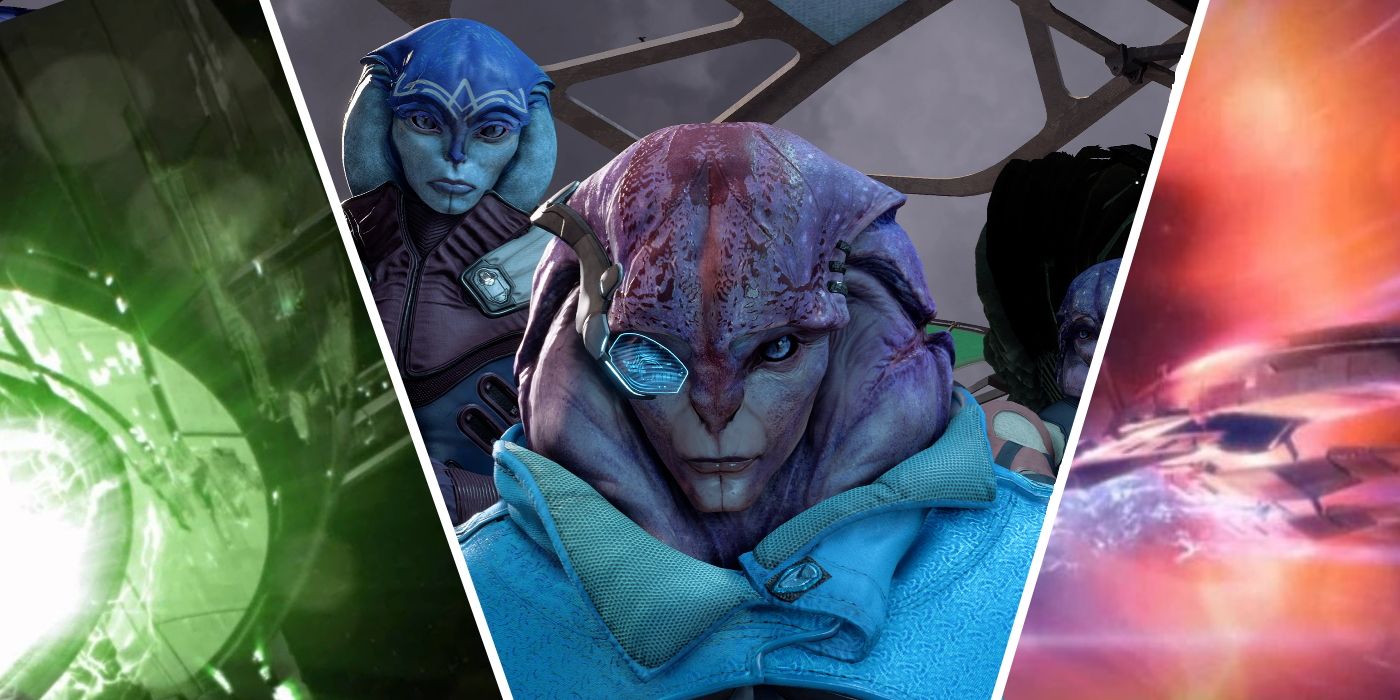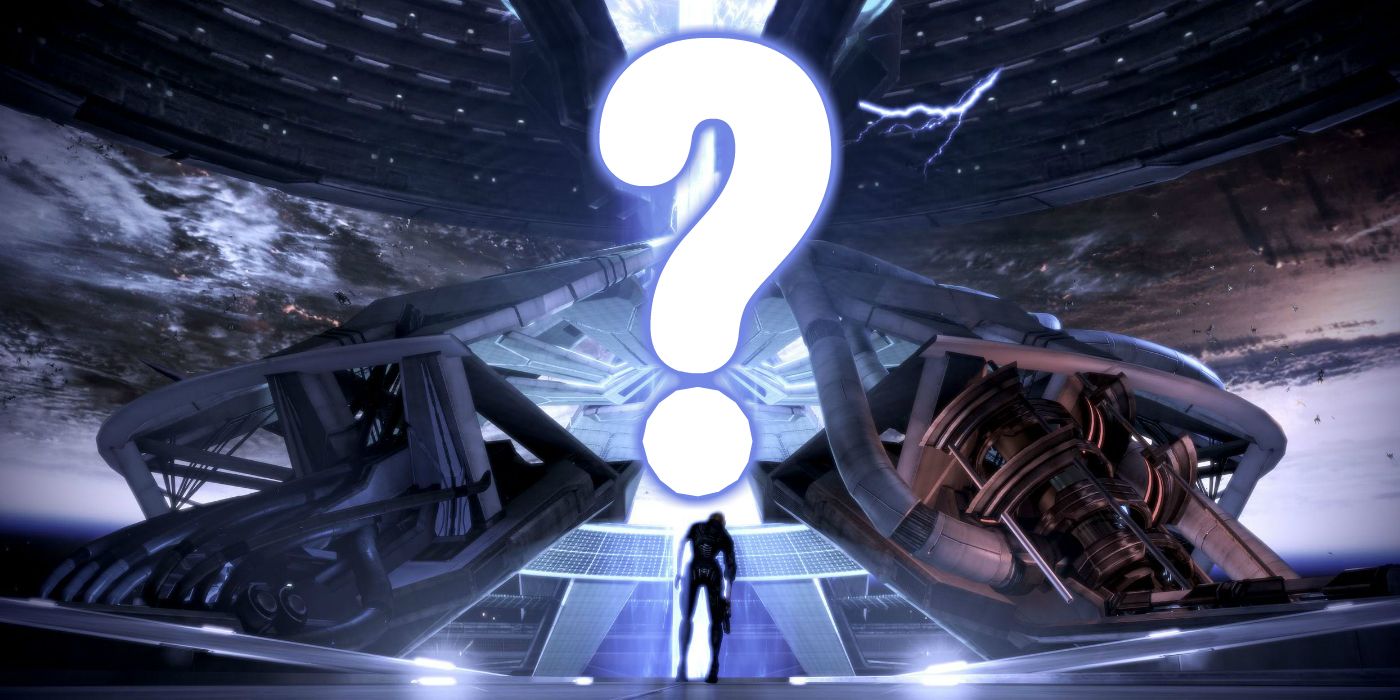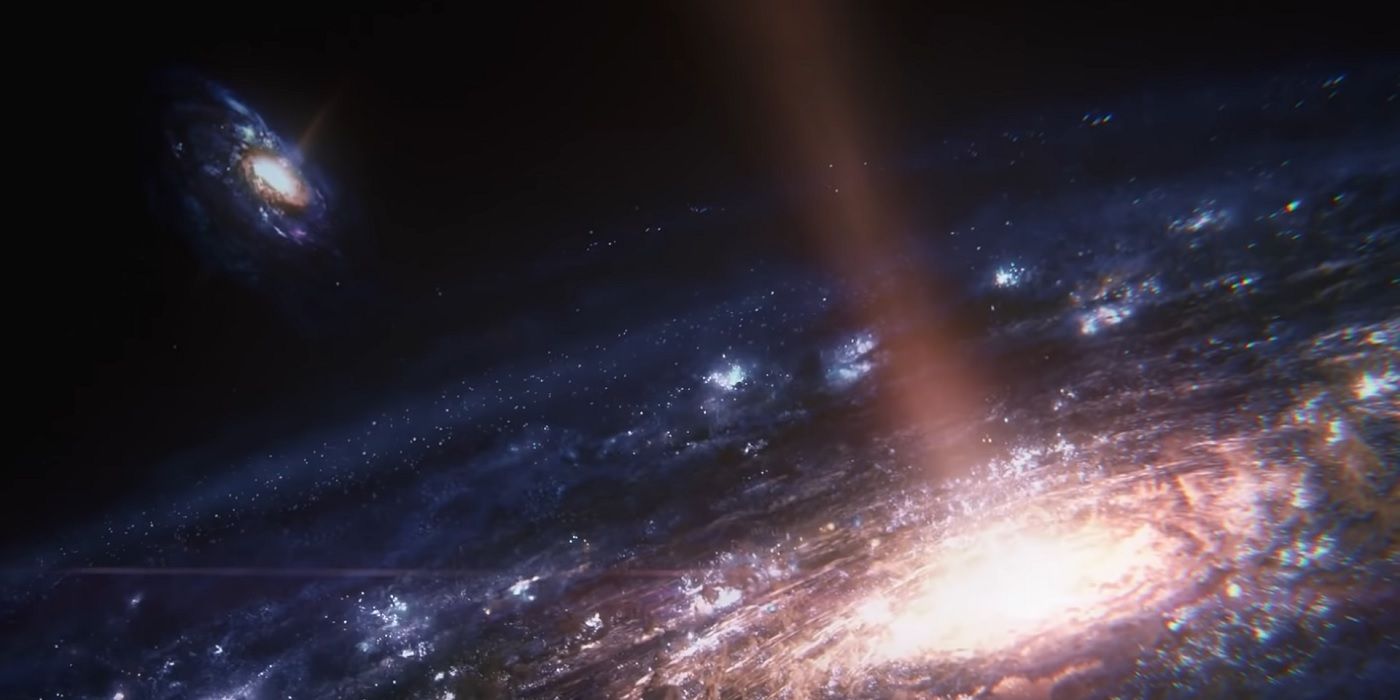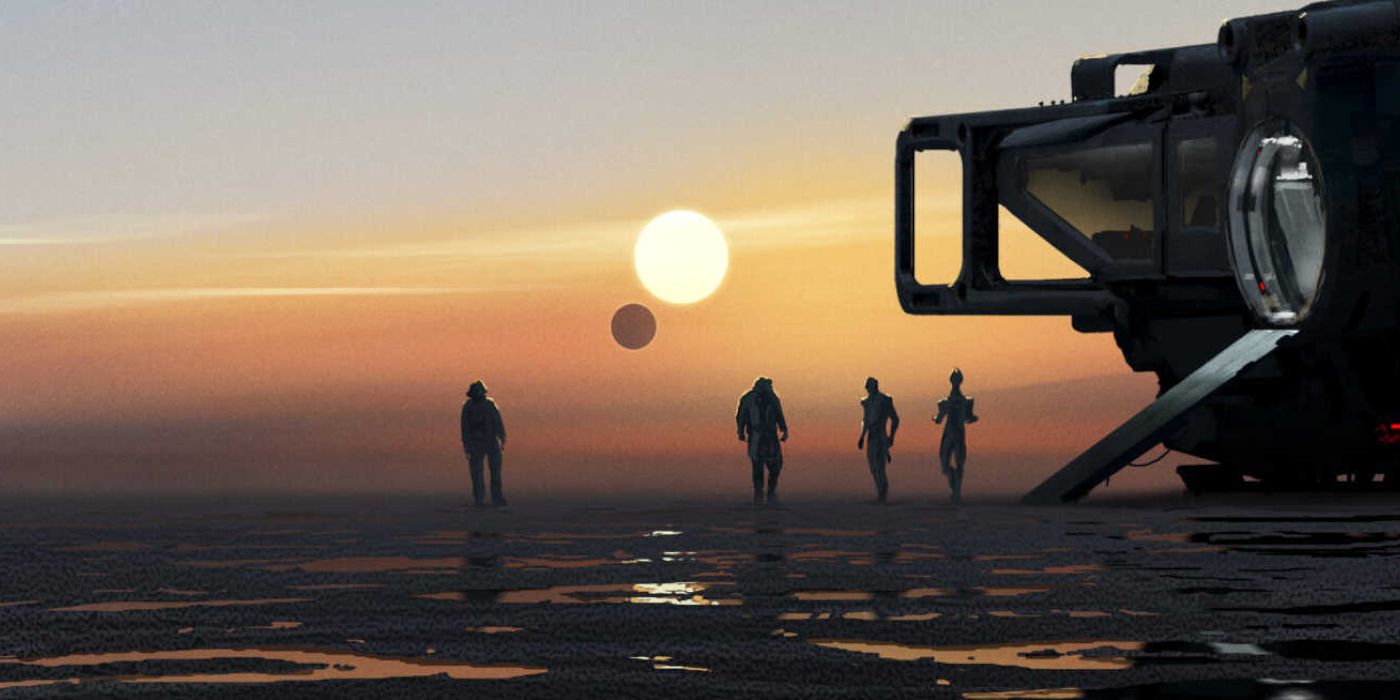The release of Mass Effect: Andromeda may have proved disappointing for many fans of the franchise and BioWare alike, but the game undoubtedly had a balancing act to perform. The three main endings of Mass Effect 3 had drastically different implications for life in the Milky Way galaxy, requiring the studio to take fans to another part of the universe to avoid clashing with the original trilogy. Now, however, it seems Mass Effect 4 will include story elements from both the Milky Way main storyline and Andromeda.
The inclusion of characters and species featured in Andromeda will likely require some huge technological developments in the Mass Effect universe. These very same developments, however, could help solve one of the biggest challenges facing Mass Effect 4 — the new game's timeline problem.
The Timeline Problem
The next chapter in the Mass Effect series, for now known colloquially as Mass Effect 4, got its first trailer at the Game Awards 2020. This trailer showed fan-favorite companion Liara T'Soni scaling the husk of a dead Reaper and discovering a piece of N7 Armor lost in the snow.
The Reapers were only killed in Mass Effect 3's "Destroy Ending," in which Shepard uses the Crucible to deactivate all synthetic life across the galaxy. This is also the only ending where Shepard is implied to survive if the player has accumulated enough Effective Military Strength by the final encounter.
The timeline problem is simple. If Mass Effect 4 takes place after the Destroy Ending, then the other two main endings to Mass Effect 3, and the experiences of the players who chose those options, are eradicated. In short, BioWare appears to be making the Destroy Ending canon. This has the potential to undermine one of the main choices made in the original trilogy and in the upcoming Mass Effect Legendary Edition, which is set to remaster the first three games. Despite its problems, it may be Andromeda which provides a solution.
A Tale Of Two Galaxies
Mass Effect: Andromeda begins before the ending of Mass Effect 3, when a series of ships known as Arks leave the Milky Way as part of a multi-century journey to the Andromeda galaxy. Waiting out the journey in cryogenic sleep, Andromeda's player character Ryder awakens around 600 years after the events of the original Mass Effect trilogy.
There are two main hints that Mass Effect 4 will find a way to connect the events of Andromeda to the Milky Way. First, the opening of the Mass Effect 4 teaser trailer shows both galaxies, which BioWare's Project Director Michael Gamble described as "intentional." Second, the "mudskipper" image which also provides the basis for the final shot in the trailer shows a silhouette based on the character Jaal from Andromeda. Jaal in a member of the Angara species native to the Andromeda galaxy. The species is only discovered when the Arks arrive over half a millennium after Mass Effect 3's plot ends.
This would imply that, just as Mass Effect 1 took place after the discovery of faster-than-light travel, Mass Effect 4 will see technology advance to allow quick travel between the Milky Way and Andromeda. This in turn hints at some form of time travel technology developing to bring characters from 600 years in the future into Mass Effect 4's time setting.
Time manipulation was played with as a plot point during the original Mass Effect trilogy's development. Mass Effect 2 set up a Dark Energy plotline which was eventually dropped, but the game's writers originally toyed with using as the basis for a time manipulation plot. In this version of the original trilogy, the Reapers would have wanted to eliminate organic life to stop organics from using Dark Energy and biotics in a way which would have hastened the entropic death of the universe.
It seems likely that a limited form of time travel will allow characters and species from Andromeda to return to the Arks' point of origin in the Milky Way, similar to the way Mass Relays were required for FTL travel in the original trilogy. How exactly this will work if it is included has yet to be revealed. However, as a plot point it could provide BioWare with a useful solution to Mass Effect 4's timeline problem.
Multiple Timelines
In order to bring the Angara into the Milky Way and connect the two galaxies, Mass Effect will have to establish some clear rules for its universe's version of time manipulation. They don't need to have a basis in real science, but like the "mass effect" itself will need to be consistently applied.
It is possible that this time manipulation could be connected to the idea of multiple timelines. Travelling through time, for example, may create a new timeline which the traveler is able to impact, but which is distinct from their original timeline. This would avoid classic problems like the Grandfather Paradox. Jaal the Angara, for example, could travel through time and space from the events of Andromeda to the end of Mass Effect 3. He could then hypothetically stop the Arks from reaching their destination. However, if time travel necessitated his arrival in a distinct timeline, changing the past would not raise the question of how he was able to travel back to begin with.
The idea of multiple timelines could end up being a part of BioWare's explanation for the canonization of the Destroy Ending. It could be that Mass Effect's in-universe science allows for all the varying choices players made in the original trilogy to remain valid, while the story in the new game simply takes place in the timeline where the Destroy Ending took place.
BioWare does not necessarily need to provide an explanation like this. The studio could simply declare the Destroy Ending canon and leave it at that. With the Mass Effect Legendary Edition set to release later this year, BioWare may want to make sure that players don't feel shoe-horned into choosing the Destroy Ending. The universe of Mass Effect will likely need to undergo some huge developments to explain any connection between the Milky Way and Andromeda. Those same developments could be key to justifying BioWare's choice to set the next game after the Destroy Ending without invalidating the other two main endings to Mass Effect 3.
Mass Effect 4 is currently in development.




